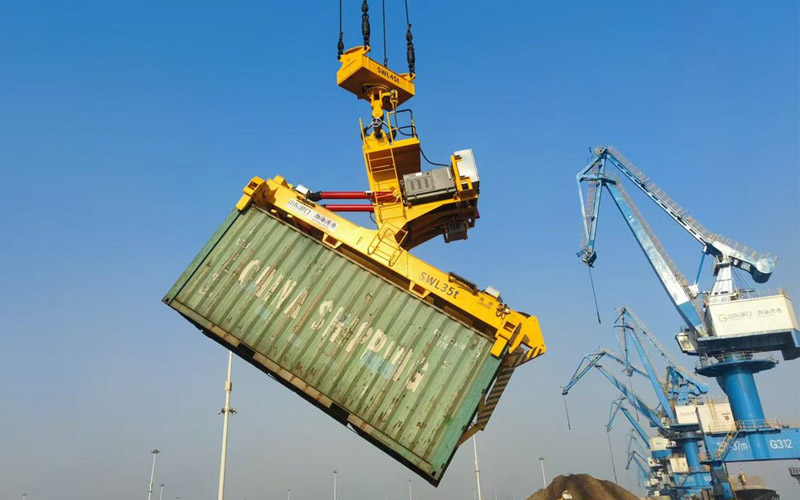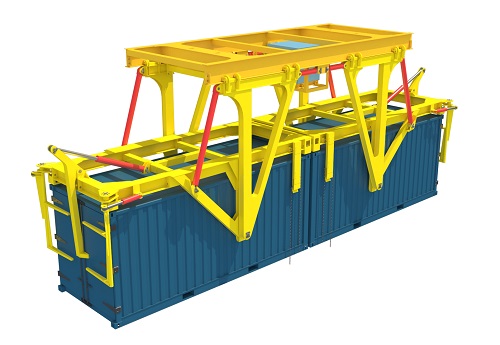Container spreaders are a crucial component of port equipment, serving as the direct tool connecting large lifting equipment such as quay cranes and yard cranes to containers. Their performance and level of automation directly determine the efficiency and safety of port operations.
Container spreaders are devices specifically designed for lifting containers, using locking pins and corner holes on the top of the container for locking and releasing.
Main Types:
**Fixed Container Spreaders**
Features: Can only lift one size of container (usually 20-foot or 40-foot).
Advantages: Simple structure, lightweight, low maintenance costs.
Disadvantages: Poor flexibility, cannot adapt to different container sizes.
Applications: Suitable for dedicated terminals or yards handling only single-size containers.
**Modular Container Spreaders**
Features: Composed of a fixed spreader (e.g., 40-foot) and a detachable spreader (e.g., 20-foot). When smaller containers need to be lifted, the smaller spreader is attached to the larger spreader.
Advantages: More flexible than fixed spreaders, can accommodate two sizes.
Disadvantages: Size conversion requires manual operation, resulting in lower efficiency.
Applications: Used in early or small-to-medium-sized terminals.
Telescopic Container Spreader
Features: This is the most mainstream and common type in modern ports. A hydraulic system drives a push rod, causing the spreader's side beams to extend and retract to accommodate various container sizes from 20 feet to 45 feet.
Advantages: Extremely flexible, rapid size conversion (typically only 20-30 seconds), and highly automated.
Disadvantages: Complex structure, relatively heavy weight, and high manufacturing and maintenance costs.
Applications: Almost all modern container terminal quay cranes and yard cranes.
Rotating
Container Spreader
Features: The spreader itself can rotate relative to the crane for precise container positioning on the ship or in the yard.
Advantages: Improves container positioning accuracy and efficiency, especially during loading and unloading.
Applications: Primarily used for high-speed quay cranes.
Double Container Spreader
Features: Can lift two 20-foot containers simultaneously.
Advantages: Significantly improves loading and unloading efficiency (theoretically doubling efficiency).
Disadvantages: Requires specific crane lifting capacity and container arrangement in the yard.
Applications: High-efficiency quay cranes.
Intelligent Container Spreader
Features: Integrates multiple sensors and recognition systems, making it a core piece of equipment in automated terminals. Functions include:
Container Type Recognition: Automatically identifies whether a container is 20-foot, 40-foot, or 45-foot.
Twist Lock Detection: Automatically detects whether the twist lock is fully locked or unlocked.
Container Landing Distance Measurement: Assists the spreader in accurately landing on the container using laser or vision systems.
Weight Detection: Monitors the container weight in real time.
Applications: Fully automated terminals.





